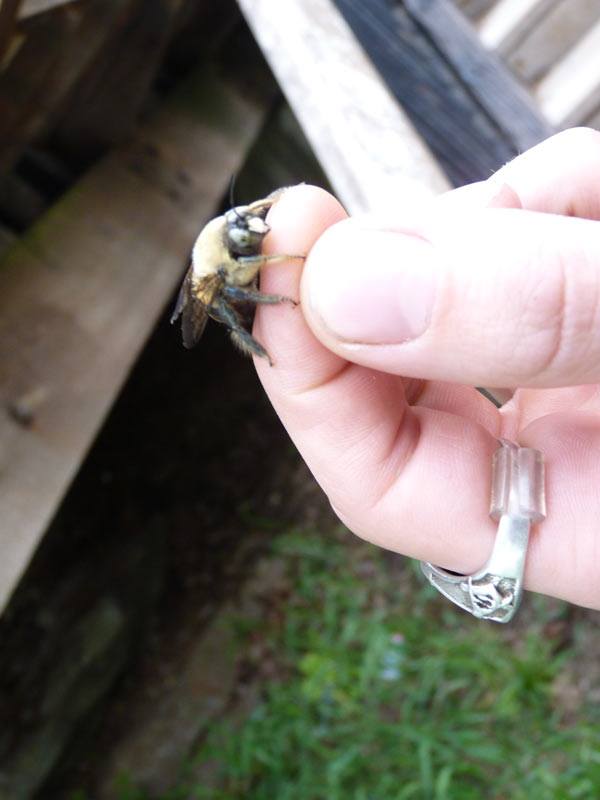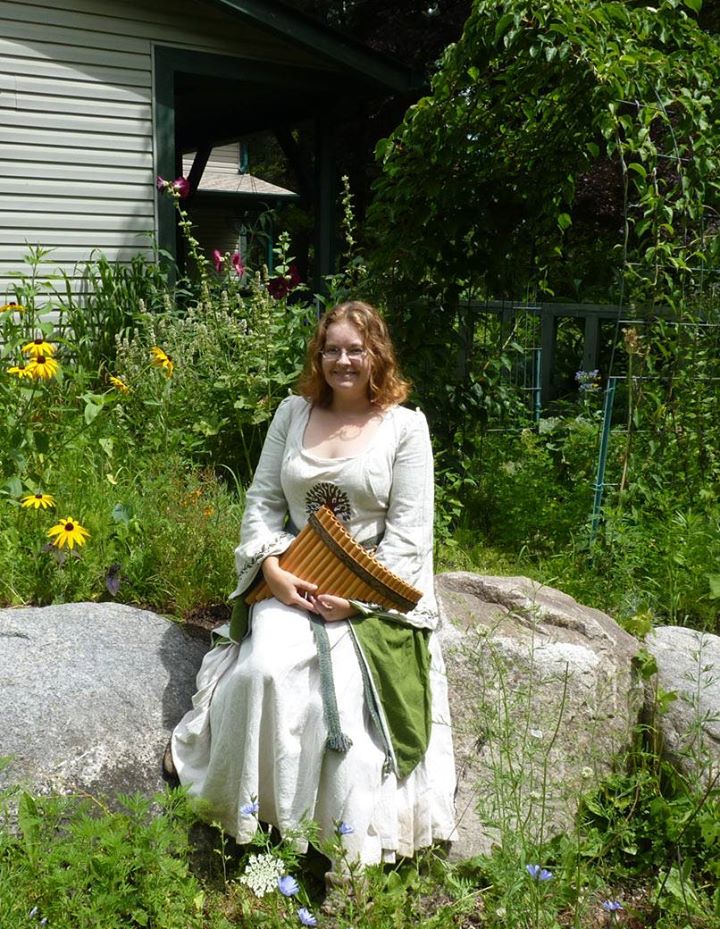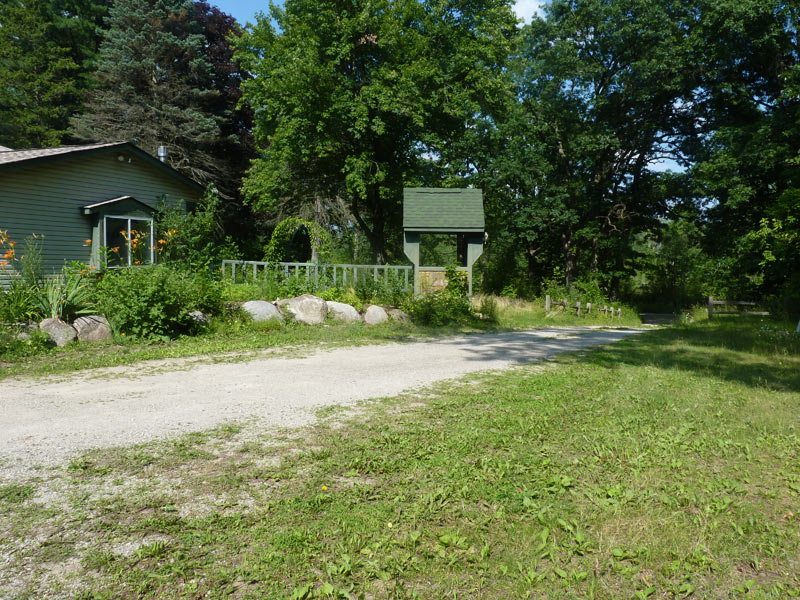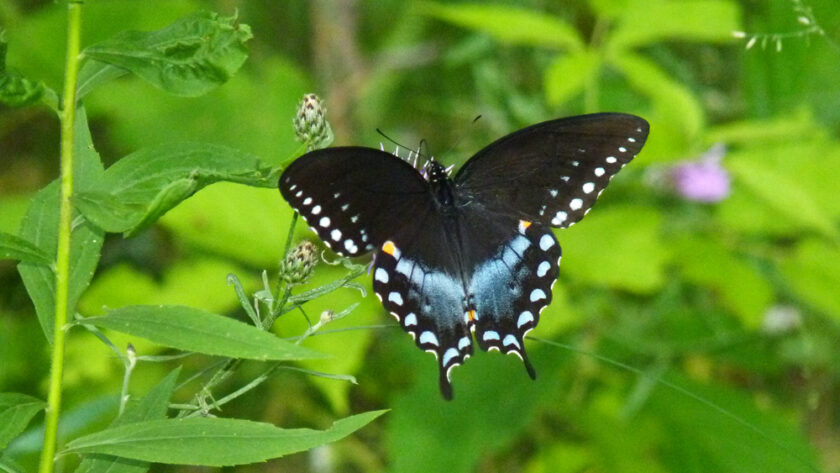
In the depths of the winter, I like to do my planning for next year’s garden, organize my seeds, and start seeds for the coming season. This year, I’m thinking a lot about perennial spaces and planning more bee and butterfly plants to attract butterflies and give my bees more forage. In this post, I’ll talk about the process of developing a bee and butterfly garden as a sacred sanctuary. I currently have two small ones near my house, but I’m ready to expand it into much more of the landscape, especially into my front yard.
I’ve been interested in bees and butterflies for a long time, but it wasn’t until the township took issue with my front lawn and I started keeping bees that I started to really understand the nature of the issue. The nature of the issue, as I see it, is this: Americans keep lawns and those lawns are like deserts to a pollinator–there is literally nothing for the bees and butterflies to eat in a typical lawn. Dandelions might pop up, which is a great early pollen source for bees. But as quickly as the dandelions pop up, they are mowed or treated with chemicals. Monocrops are also a problem–where there are crops, they are often GMO with chemicals and insecticides bred into their DNA. A third problem is in the greenhouse industry–a lot of flowers that you buy in the spring for planting come out of greenhouses covered in insecticides–if you plant those flowers, you are exposing the pollinators to poison and harming the bees even more. All in all, its a sorry state of affairs for our pollinators and butterflies, and part of the reason why we are seeing such declines in bee populations (wild and domesticated) and in butterfly populations.
Bee and Butterfly Gardens as a Sacred Space

Given these rather dire circumstances, I want to turn our attention once more to the idea of the sacred space and sacred site, and I’d like to suggest that bee and butterfly sanctuaries might be another kind of sacred space we can create. Because I think that sacred spaces for function for more than just humans–a sacred space, especially one created in an earth-centered tradition, hopefully, will serve for many different kinds of life. I’ve already discussed creating sacred spaces in this blog pretty extensively–from Understanding and Developing Sacred Sites in the US to how to create various kinds of sacred spaces such as stone circles, stone cairns, and other projects. I’ve also explored the garden as a sacred sanctuary.
There are a few ways to create a sacred space for pollinators, one that provides them with what they need in a chemical-free environment but also one that honors them in other ways. The best part about this is that a bee and butterfly garden is beautiful, functional, and, if you plan it right, always blooming and full of tasty treats and medicinal herbs.
Basic Needs for Pollinator Sanctuaries
The basic needs for a bee and butterfly sanctuary are:
1) A wide range of flowering plants, trees, and bushes that are flowering at different times to ensure a consistent nectar flow and pollen throughout the season. Fruit trees provide early blossoms, goldenrod provides some of the last pollen of the year, and the host of wildflowers and bushes in between get them through the summer. There is typically a “summer dearth” of nectar, so it’s also useful to plan for that and have flowers blooming during that time.
2) Pollinators need shelter. It’s useful to study how different bees and butterflies in your region live so that you can provide what they need. Shelters for wild and domestic bees can be built, such as hives or shelters for mason bees. Bumblebees, another wild bee who is declining in population, live in colonies of 50-60 bees underground (the queen alone overwinters, also underground), so you want to make sure there are plenty of places for them to burrow where they won’t be disturbed.

3) Pollinators need water. You might think about shallow dishes where the water is easily accessible and bees and butterflies can’t drown. Many beekeepers keep a little bee fountain going–I have a large pond, so I put rocks along the edge near the beehives where they can land easily and get at the water easily without drowning.
4) Pollinators need host plants. Another thing that pollinators need, especially butterflies, are host plants. These are plants, like milkweed, where they can lay eggs and where young will find the nutrients they need to grow. These plants are things like milkweed (Monarch), spicebush (Spicebush swallowtail, below), clover, snapdragon, alfalfa, fennel (other swallowtails), sunflower, and marshmallow.
Options for Structuring Sacred Bee and Butterfly Gardens
Truly, any space will do for a bee and butterfly garden–I’d like to provide a range of ideas for different living circumstances.
1) The Pollinator Porch. Even if all that you have is a small porch, you can make it a place of sacred activity, of reflection, and introspection, and welcome the energy of the pollinators to your doorstep. Pollinators are a joy to watch, and are not aggressive or mean (hornets can be, but they are not what you are attracting with flowering plants). Even if it’s just a few pots of flowers and herbs that bloom at different times sitting on your porch, a pollinator porch can be a quiet place for you to relax, meditate, and enjoy the bee and butterfly show.

2) Pollinator Hedge. In older European traditions, the “hedge” was an important part of any property–the hedgerows often had closely planted shrubs, trees, and a vibrant understory of medicinal plants and flowers–and a pollinator paradise. Pollinators need places to rest and avoid the heat of the summer during the day–a hedge can provide that. You can create a pollinator hedge around the edges of a property (this is what I have) as well as the edges of a garden. My hedge along the edge of my property works pretty much like this: Inside on the property line: trees (including flowering hawthorn), edged by elder, blackberry, wild rose, and black raspberry (also that flower, and produce fruit and medicine for me and other wildlife); amongst this, various flowering plants are included, many of which sprung up wild: sweet clover (some would argue its invasive; I argue its the best food source my bees have at certain points of the year), goldenrod (medicinal, great late-season feed source), wild bergamot, boneset, and much more. The hedge also provides me with a good deal of privacy, which I certainly value and makes the whole property encircled and protected.

3) Pollinator Garden Edges. Gardens are already magical and sacred places, and all the more so if we build spaces for pollinators. I got this idea from a friend who runs our campus student organic farm who planted ever-flowering plants, like calendula and blue queen sage, at the edge of each garden row. This gives pollinators a place to come to within garden whether or not the other crops are blooming. You can add small shrines, stone cairns, and much more to garden spaces. I think it adds more magic to an existing garden, and certainly creates space not just for food for people but also for the pollinators. The alternative is to dedicate a pollinator row or two in the garden that is a permanent feature (or make a pollinator hedge around the outside).
4) Wildflower Fields. A field of wildflowers, especially native wildflowers, is a wonderful way to dedicate space to for pollinators. I generally just let my backfield (about 1/2 an acre) left unmowed and it has been a wonderful experience to see what has taken up residence there. The only thing I’ve done is I’ve to plant lots of different flowers in my field (when I arrived, it was primarily dominated by ox-eye daisy). I’ve gotten St. Johns Wort, New England Aster, Milkweed, Boneset, and Goldenrod to grow there, and am trying for some other flowering and nectar plants this year.

5) Pollinator-friendly lawn. I’ve mentioned this before, but another way to help the pollinators out is to replace the grass with something that doesn’t require mowing and that is friendly to pollinators. I’ve been working on planting large patches white dutch clover–the honey bees just love it. I would place a blanket on the edge of the clover patch, read books, meditate, and watch the bees enjoy the clover–which bloomed for almost a month.
6) Pollinator gardens. I have dedicated gardens for pollinators, little nooks and crannies tucked in places where the herbs and flowers are abundant and blooming all season long!
Plants to Consider (Zone 5-7 suggestions)
There are a lot of opinions out there on what plants to plant (native, non-native, etc). I take a permaculture design perspective, which is to use groupings of plants that all produce different benefits, and form “guilds” that grow in the same areas as other plants. In other words, I like to plant things that will create a natural ecosystem, encourage pollinator visits, and also enrich and nourish the soil. One of the things you’ll notice about many of these plants is that they aren’t just good for the bees and butterflies–but many of them are also good for us (either as medicine or as an edible). Here are some of the ones I’m planning for my expanded gardens:

- Sweet clover: I’ve never needed to plant sweet clover; it grows wild everywhere where one mows (you can see it growing boldly along the edges of paths, but not where the ground hasn’t been disturbed). It also makes a great smudge herb and is an excellent medicinal herb.
- Butterfly Bush: I’ve had a few butterfly bushes growing in my butterfly garden, and they are truly like nothing else. They bloom late in the season when there is usually nectar dearth. They are visited by more butterflies and bees (and even hummingbirds) than anything else growing in my yard. Truely a beautiful and amazing plant. They don’t take the cold winters well, however, and the deep freeze of last winter killed my bushes.
- Butterfly Weed/ Pleurisy Root. A great medicinal plant, late bloomer, brilliant orange.
- Milkweed. Many species of this exist; you’ll want some common milkweed for the monarchs. This is also a tasty wild edible!
- Bee Balm / Wild Bergamot. Another fantastic medicinal; this blooms and blooms and is wonderful for the bees.
- Orageno. Another long-blooming, medicinal, and culinary plant.
- Anise Hyssop. Delicious for teas, long-blooming, and very medicinal!
- Blue Vervain. Medicinal, long-blooming, beautiful and tall!
- Fruit trees. Fruit trees of all kinds provide very early blooms. This includes hawthorns, apples, pears, peaches, plums, and apricots.
- New England Aster. This plant is a stunning purple in the fall, and blooms to give a last source of pollen and nectar. Did I mention I pretty much cured my asthma with this plant?
- Goldenrod. A lot of people think they are allergic to goldenrod, but its ragweed, which blooms at the same time as Goldenrod. Goldenrod is a wonderful medicinal plant and is beautiful in the fields!
- Purple Coneflower. Medicinal? Check. Beautiful? Check!
- St. Johns Wort. Mid-summer blooming plant, this is another one my bees love. And its highly medicinal.
- Joe Pye Weed. A type of milkweed; medicinal and wonderful!
- Most herbs. Most garden herbs have something the bees like–mints, lavender, sages, thymes, chives, etc!
Finally, here’s a shot of before and after with my butterfly garden. I had friends help me put in the stone pathway from stones found here on the property.






A beautiful post, and wonderful photos of your sacred spaces. I planted wildflowers, honeysuckles and buddleia last year and the bees and butterflies can’t get enough of them! I’ve recently taken to letting my (average suburban) back lawn grow wild and only cut it when I really need to. I was amazed at the variety of flowers that pop up if you leave a lawn to its own devices, and I have become quite fond of the “untidy meadow” look.
Ryan, I love the “untidy meadow” look :). I think its funny that people want it to be cut. That it is somehow better that way…but its not! I love to see what grows wild. I was super excited to find Joe Pye Weed and Bonset and All Heal just growing there!
How do you ensure that you get regular honeybees and not the much more aggressive Africanized variety? We have them down here…
Well, I have my own hives :). But what you can do is build houses for other kinds of bees that would potentially keep the africanized aggressive bees at bay–mason bees, for example. Honestly, though, I don’t have a lot of experience with them.
Enjoyed your post immensely, so beautiful and gorgeous photos.
Thank you!
Absolutely lovely! Thank you so much for sharing what you’re doing for the bees and butterflies. It’s given me a few ideas for my wee urban “yard”.
I’d love to hear more once you’ve made some plans!
Greetings and thank you. I am always delighted to get the latest on what you are up to. I feel I am reading something of value each time and respect your druidry approach. Though your environment where you live is far different from mine in Northern Ca. the heart of it all is relevant. I hope our paths may one day cross. Patrick
Thanks Patrick! I was thinking about coming out to the west coast for a bit of a road trip this summer! I need to find some ancient trees out there….Perhaps our paths will cross :).